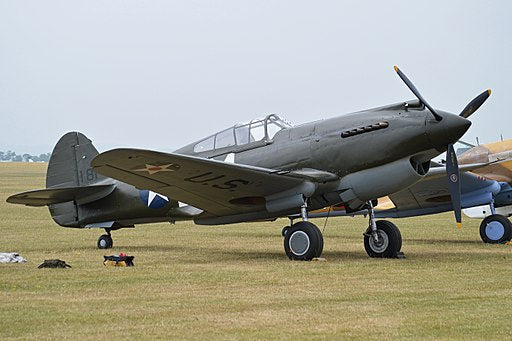Throughout history, figures emerge whose lives are symbolic representations of the varied and multifaceted human experience. One such figure is Charles Older, whose metamorphic journey from the confines of an aircraft cockpit to presiding over a courtroom offers an inspiring tale of resilience, evolution, and the unyielding spirit of determination.
Before starting his storied legal career, Older’s earliest claim to fame was in the air. As a fighter pilot in the illustrious Flying Tigers during World War II, he deftly maneuvered through tumultuous skies, dancing amid the plumes of smoke and glaring bursts of enemy fire. The Flying Tigers, a group of volunteer pilots defending China against Japanese aggression, have been immortalized in countless tales of bravery, and Older’s contribution is no less significant. He distinguished himself by downing a notable ten enemy aircraft within this elite cadre of airborne warriors. But his legacy in aviation was not merely the sum of his victorious encounters; it was also forged through his embodiment of valor, discipline, and an unwavering commitment to his cause.
Yet, for all the gravity-defying adventures that colored his early years, it was in the grounded confines of a courtroom that Older would eventually carve out another equally indelible legacy. Swapping the fighter pilot’s leather jacket for a judge’s robe, Older’s professional evolution might appear, at first glance, as an incongruous shift. However, a closer examination reveals the intertwined threads of precision, analytical prowess, and steadfast commitment underpinning both vocations.
Taking up the law, Older approached each case with the same meticulous attention to detail that had once guided him through difficult aerial combat. In the courtroom, he soared not through cumulus clouds but through the nuanced intricacies of the legal labyrinth. It is perhaps fortunate, or maybe fate, that his most notorious role as a judge would involve a case that combined elements of showmanship, rebellion, and high stakes—the trial of Charles Manson and his followers.
Presiding over one of the most sensational trials in American legal history, Judge Older’s courtroom became a theatre where the macabre narrative of Manson and his “Family” unfolded. Throughout the tumultuous proceedings, marred by outbursts, threats, and tense atmosphere, Older maintained an unwavering commitment to justice. He exhibited a calm, centered demeanor reminiscent of his days facing adversaries in the skies. His balance and resilience during the trial reaffirmed the nexus between his past as a combat pilot and his role as a judge.
In analyzing the transition of Charles Older, one encounters a journey that underscores the interconnectedness of disparate experiences. From cockpit to courtroom, Older’s life illustrates the beautiful, often unexpected ways one chapter can prepare an individual for the next. It reminds us that a singular role or achievement does not define the essence of a person but by the tapestry of experiences, challenges, and transformations that weave together to form the entirety of their life’s story.
For more insights into the P-40B Warhawk H81-A2 and other important military aircraft, visit Aces In Action. Here, you’ll find an amazing piece of artwork by Craig Tinder titled “Hell’s Angel” that depicts a highly detailed and technically accurate profile of the P-40B Warhawk flown by Charles Older of the famed Flying Tigers. The panoramic print includes a fragment discovered nearly 40 km from Murmansk, Russia on the western side of Kola Bay.
P-40B Warhawk – Flying Tiger – Framed Panoramic Aviation Art Print – Profile by Craig Tinder
This P-40E Warhawk Air Intake fragment was discovered nearly 40 km from Murmansk, Russia on the western side of Kola Bay. This component was discovered along the shoreline with many other components from the cockpit. The aircraft was part of the Lend-Lease act between the United States and the former Soviet Union.






Share:
Fork-Tailed Devil: Why the Germans Feared the P-38
Luftwaffe Aces: A Comparative Analysis of Priller and Other Notable Figures of the German Air Force